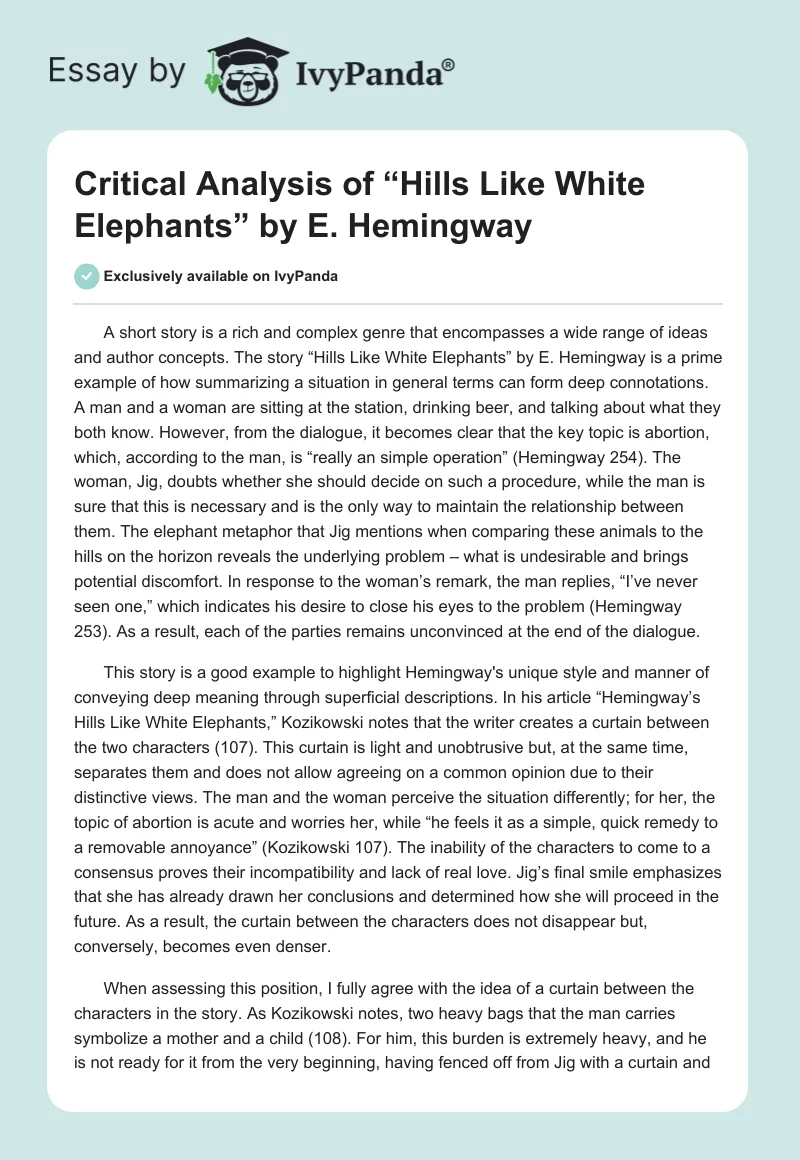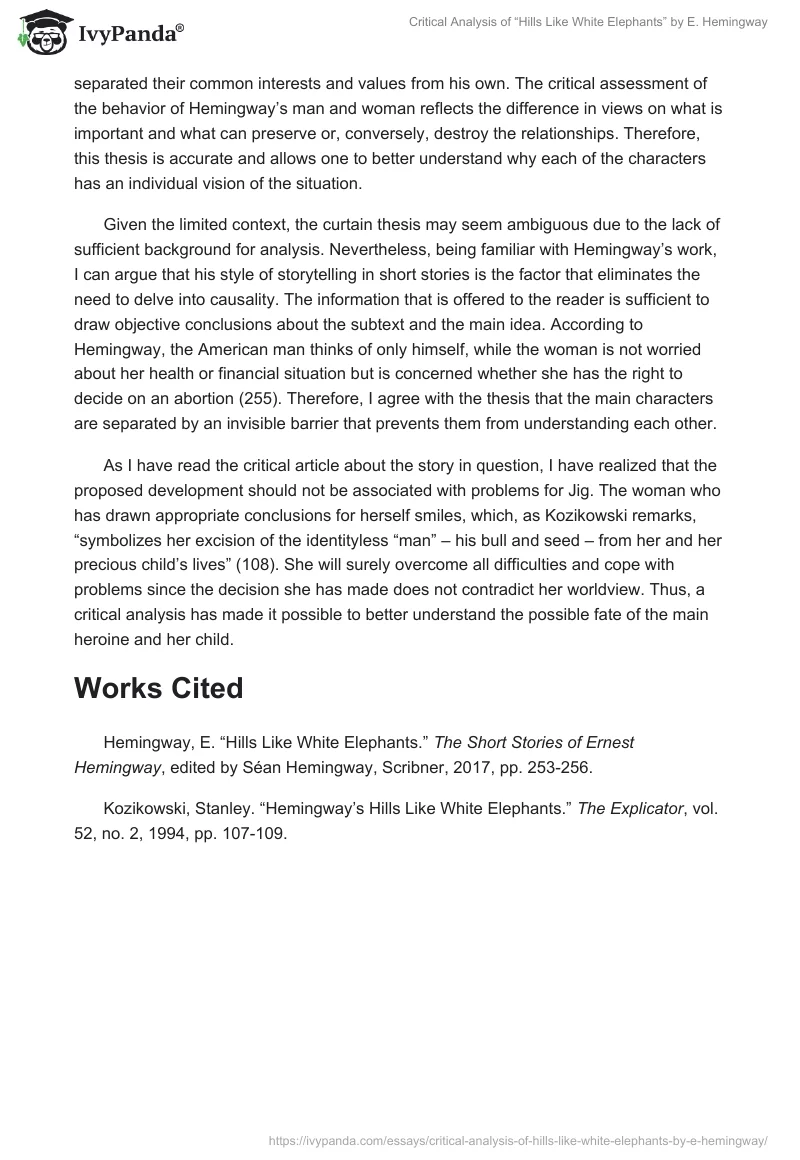A short story is a rich and complex genre that encompasses a wide range of ideas and author concepts. The story “Hills Like White Elephants” by E. Hemingway is a prime example of how summarizing a situation in general terms can form deep connotations. A man and a woman are sitting at the station, drinking beer, and talking about what they both know. However, from the dialogue, it becomes clear that the key topic is abortion, which, according to the man, is “really an simple operation” (Hemingway 254). The woman, Jig, doubts whether she should decide on such a procedure, while the man is sure that this is necessary and is the only way to maintain the relationship between them. The elephant metaphor that Jig mentions when comparing these animals to the hills on the horizon reveals the underlying problem – what is undesirable and brings potential discomfort. In response to the woman’s remark, the man replies, “I’ve never seen one,” which indicates his desire to close his eyes to the problem (Hemingway 253). As a result, each of the parties remains unconvinced at the end of the dialogue.
This story is a good example to highlight Hemingway’s unique style and manner of conveying deep meaning through superficial descriptions. In his article “Hemingway’s Hills Like White Elephants,” Kozikowski notes that the writer creates a curtain between the two characters (107). This curtain is light and unobtrusive but, at the same time, separates them and does not allow agreeing on a common opinion due to their distinctive views. The man and the woman perceive the situation differently; for her, the topic of abortion is acute and worries her, while “he feels it as a simple, quick remedy to a removable annoyance” (Kozikowski 107). The inability of the characters to come to a consensus proves their incompatibility and lack of real love. Jig’s final smile emphasizes that she has already drawn her conclusions and determined how she will proceed in the future. As a result, the curtain between the characters does not disappear but, conversely, becomes even denser.
When assessing this position, I fully agree with the idea of a curtain between the characters in the story. As Kozikowski notes, two heavy bags that the man carries symbolize a mother and a child (108). For him, this burden is extremely heavy, and he is not ready for it from the very beginning, having fenced off from Jig with a curtain and separated their common interests and values from his own. The critical assessment of the behavior of Hemingway’s man and woman reflects the difference in views on what is important and what can preserve or, conversely, destroy the relationships. Therefore, this thesis is accurate and allows one to better understand why each of the characters has an individual vision of the situation.
Given the limited context, the curtain thesis may seem ambiguous due to the lack of sufficient background for analysis. Nevertheless, being familiar with Hemingway’s work, I can argue that his style of storytelling in short stories is the factor that eliminates the need to delve into causality. The information that is offered to the reader is sufficient to draw objective conclusions about the subtext and the main idea. According to Hemingway, the American man thinks of only himself, while the woman is not worried about her health or financial situation but is concerned whether she has the right to decide on an abortion (255). Therefore, I agree with the thesis that the main characters are separated by an invisible barrier that prevents them from understanding each other.
As I have read the critical article about the story in question, I have realized that the proposed development should not be associated with problems for Jig. The woman who has drawn appropriate conclusions for herself smiles, which, as Kozikowski remarks, “symbolizes her excision of the identityless “man” – his bull and seed – from her and her precious child’s lives” (108). She will surely overcome all difficulties and cope with problems since the decision she has made does not contradict her worldview. Thus, a critical analysis has made it possible to better understand the possible fate of the main heroine and her child.
Works Cited
Hemingway, E. “Hills Like White Elephants.” The Short Stories of Ernest Hemingway, edited by Séan Hemingway, Scribner, 2017, pp. 253-256.
Kozikowski, Stanley. “Hemingway’s Hills Like White Elephants.” The Explicator, vol. 52, no. 2, 1994, pp. 107-109.


